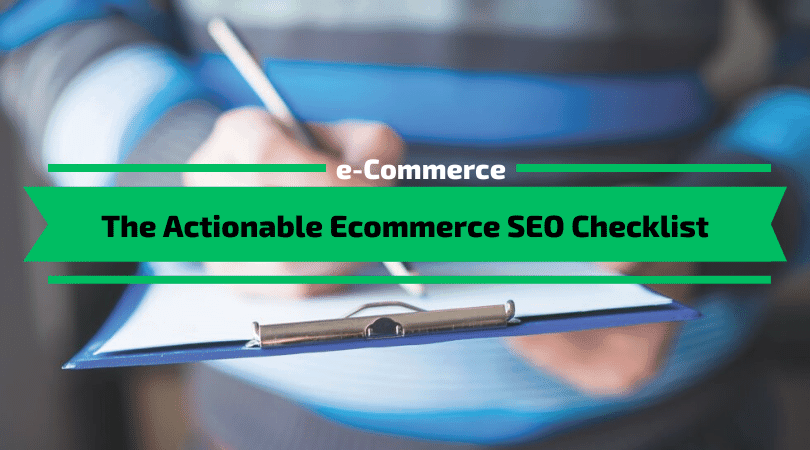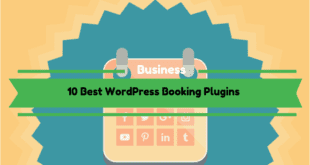Managing everything when it comes to SEO when dealing with an e-commerce site can be a very daunting activity. To lay a solid SEO foundation for various online retail SEO’s I’ve worked within before, I created this actionable SEO eCommerce checklist so you can easily check how your e-commerce website stands from an SEO perspective.
Table of Contents
SEO for Ecommerce Checklist – Why you need one?
The SEO Ecommerce checklist covers the basics and most important things you should be doing from an SEO perspective on your eCommerce site (new or established), and we use it for all our e-commerce SEO projects at MediaDigiMost modern eCommerce platforms & providers should be able to cope with the majority of the points on the list, some may require additional plugins or apps to get perfect.
One thing to remember when working through the SEO for E-commerce checklist is that each one you can action / improve will be incrementally beneficial to your overall site SEO, try not to get hung up if there are a few points that you can’t quite get perfect.
Suppose you can tick off everything on the list. Excellent! If there are a couple you can’t then that is okay, it’s all about getting your site to be as SEO-friendly as possible.
1. Sitewide SEO
- Do you have Google Analytics installed? [GUIDE: How to track your SEO results with Google Analytics]
- Have you verified your site in Google Search Console? [GUIDE: How to use Google Search Console for SEO]
- While you’re at it, get Bing Webmaster Tools verified too? You may also add it to Yandex Webmaster.
- Are you using Woocommerce (or another WordPress-based shopping cart)? Make sure you have the MonsterInsights Google Analytics plugin.
- Do you have Yoast SEO / RankMath / SEOPress installed right?
- Use Google Search Console to fix the following: 404 crawl errors, 500 crawl errors, Duplicate meta tags (title tags, meta descriptions), Missing meta tags
- Use Screaming Frog (quite literally the best-valued SEO tool ever) or Website Auditor to find technical errors like 302 redirects that should be 301s, multiple redirect chains, broken links, orphaned pages, and other crawl problems.
2. Category Page-Specific
- Keyword research (the cornerstone of SEO). Find suitable keywords using keyword research tools. Review the difficulty, generally lower-volume are easier to rank for than higher – aim for a single keyword/topic per page – always have a primary keyword to target for each page.
- Is your primary keyword in your category page’s URL?
- Is your primary keyword in your title tag? Does your title tag encourage clicks? Have you included words like ‘Shop’ or ‘Buy’, ‘Best Price’ to show you are an eCommerce site?
- Is your keyword (or synonym) in your meta description? Is the meta description of approx. 155 characters, and entices the user to click on the link?
- Do you offer free delivery, free returns, include this incentive to increase CTR?
- Is your primary keyword in your H1 tag on the page? Make sure you are only using a single H1 tag. Try to incorporate synonyms of the keyword in H2, H3, H4… if you are using them.
- Do you have enough text on the page – I would recommend at least 350 words, to ensure you can clearly explain to the visitor (and search engines) what the topic of the page is.
- Make sure you have included synonyms in your text on the page. Synonyms make it easier to rank for a broader range of keywords and the natural language usage ensures you aren’t keyword stuffing.
- Are you using a hero banner image? Make sure the ALT tags and the file names include your primary keyword.
- You’re linking to product pages on your category pages, but are you also linking to related categories? Having a section on each category page that links to other related categories can allow the spreading of link equity across your site to boost those categories.
3. Product Page-Specific
- Are there any keywords suitable to target for your product page?
- If there isn’t, consider adding a rel=canonical to the category page.
- Is your primary keyword in your product page’s URL?
- Is your primary keyword in your title tag? Does your title tag encourage clicks? Have you included words like ‘Shop’ or ‘Buy’ to show you are an eCommerce site?
- Is your keyword (or synonym) in your meta description? Is the meta description of approx. 155 characters, and entices the user to click on the link? Do you offer free delivery, free returns, include this incentive to increase CTR.
- Is your primary keyword in your H1 tag on the page? This should be the product name primarily!
- Does your product description sell the product and not just list the facts about it?
- Make sure the ALT tags and the file names include your primary keyword of the product imagery on these pages.
- Are you linking to other similar products as well as linking back to the category page (use of breadcrumbs is strongly advised on eCommerce sites)?
4. Technical SEO
- Do you have any duplicate content? This can often be on product pages if you have copied them from the supplier or have many similar products. Fix these by re-writing unique content on product pages, rel=canonical them to the category page. Duplicate content could cause indexation issues on your site. Check it on Copyscape.com
- Always use absolute URLs in your code rather than relative ones, it’s slightly better for crawlability, but also makes finding people stealing your content much easier.
- Do you have a proper Schema structure added? If you use WordPress install Schema Markup Pro. Guide: How to Implement Schema To Improve Your SEO [Complete Guide]
- Have you checked your site’s speed with Google PageSpeed Tool, Web.dev, and GTMetrix.com? Try to follow as many of their recommendations as possible. If you’re on WordPress, check this speed-up guide.
- Is your site mobile-friendly? Test it in Google Mobile-friendly tool. Have you checked it on multiple browsers with BrowserStack?
- Have you installed a valid SSL Certificate? Test on SSLShopper and SSLlabs. Does your website redirect to its HTTPS version? Test on RedirectCheck.com.
- Have you created an XML sitemap and submitted it to Google and Bing Webmaster Tools? Use XML-Sitemaps.com or the Yoast SEO WordPress plugin.
- Is your Robots.txt entirely up to date and not accidentally blocking search engines from your site?
- Does your hosting account support loads of traffic? Do a load test on LoadView-Testing.com and a stress test on LoadImpact.com
5. Backlinks
- Are you linking to your internal pages in a SEO-friendly way? Are you describing the page you’re linking to in the anchor text, so that both users and search engines understand what it’s about?
- Have you ran a backlinks audit and disavowed the low-quality ones? [GUIDE: How to do a backlinks audit in 60 minutes]
- Have you started off-page optimization and began building links? This is the hardest but one of the most important aspects of SEO!
- Have you looked at competitor link profiles? This is the easiest way to get started with link building. Use SemRush, Ahrefs, or SEO SpyGlass.
- Have you added your products to price comparison shopping websites? This will bring you backlinks and traffic, especially if you have good prices. [GUIDE: 17 Price Comparision shopping websites] to start with
- Did you added your site to Google My Business?
- Have you listed your site in reviews websites like Yelp.com, TrustPilot.com, Facebook.com, BBB?
- Did you used an SEO Audit Tool to double-check everything once you go live? SEO Power Suite or SEM Rush.
- Have you set up social media accounts on Facebook, Twitter, LinkedIn, Instagram, Pinterest and added social media sharing buttons and featured images for products?
- Did you claim your business/website username on other major networks for reputation management reasons? Not only do you want to make sure no one else gets your account name, but you can often “own” all the results on the first page of a search for your brand if you’re a new website or company. Use NameChk.com to find available ones. Here is the URL structure of some of the major networks: Youtube.com, WordPress.com, tumblr.com, Scribd.com, Academia.edu, Quora.com, SlideShare.net, Medium.com, Etsy.com, About. me, Gravatar.com, Flickr.com
Conclusion on SEO Ecommerce Checklist
There you have it, a complete on-site eCommerce SEO checklist. Have you ticked everything off? How many changes have you made?
SEO is a vast topic, however, I recommend these articles if you want to dig more into this matter.
- Ecommerce Content Strategy Complete Guide
- How to Maximize Your Product’s E-Commerce Exposure
- E-commerce SEO: Tips to Boost Sales of your Business!
I’m always interested in hearing your results, so let me know in the comments.
 Monetize.info We Help You Grow & Monetize Your Online Business!
Monetize.info We Help You Grow & Monetize Your Online Business!





![LinkWhisper Review [Internal links on AutoPilot]](https://monetize.info/wp-content/uploads/2020/05/LinkWhisper-Review-310x165.webp)

![How to build backlinks for eCommerce [The Ultimate Guide]](https://monetize.info/wp-content/uploads/2020/07/How-to-build-backlinks-for-eCommerce-The-Ultimate-Guide-310x165.webp)